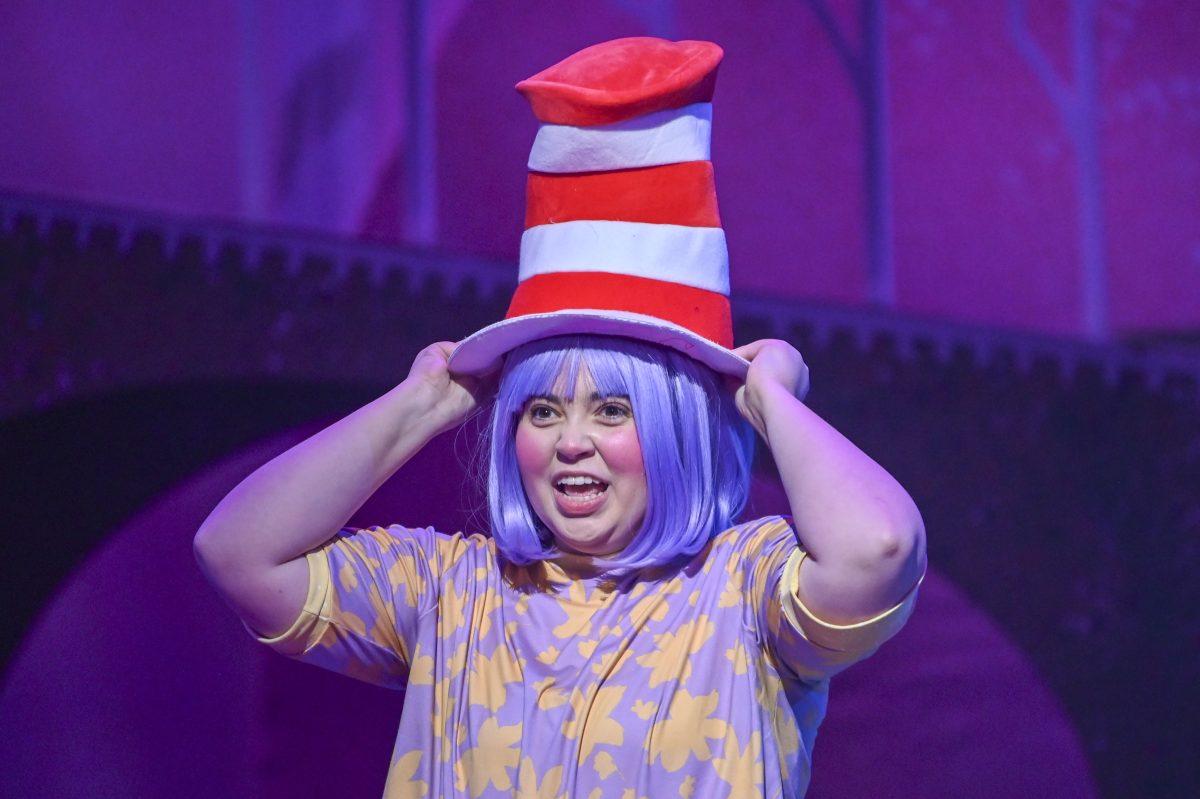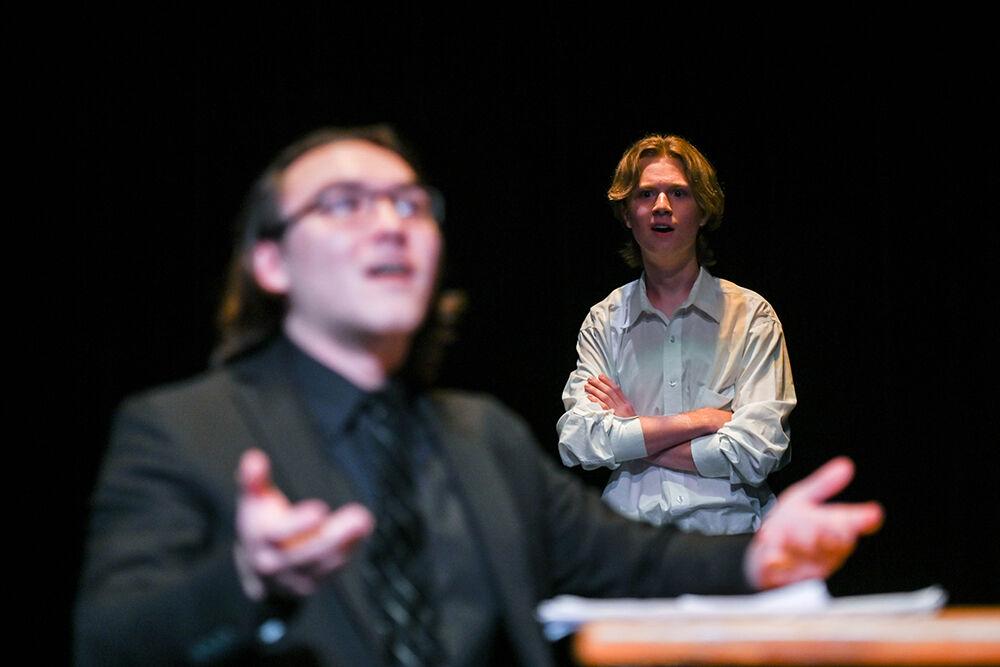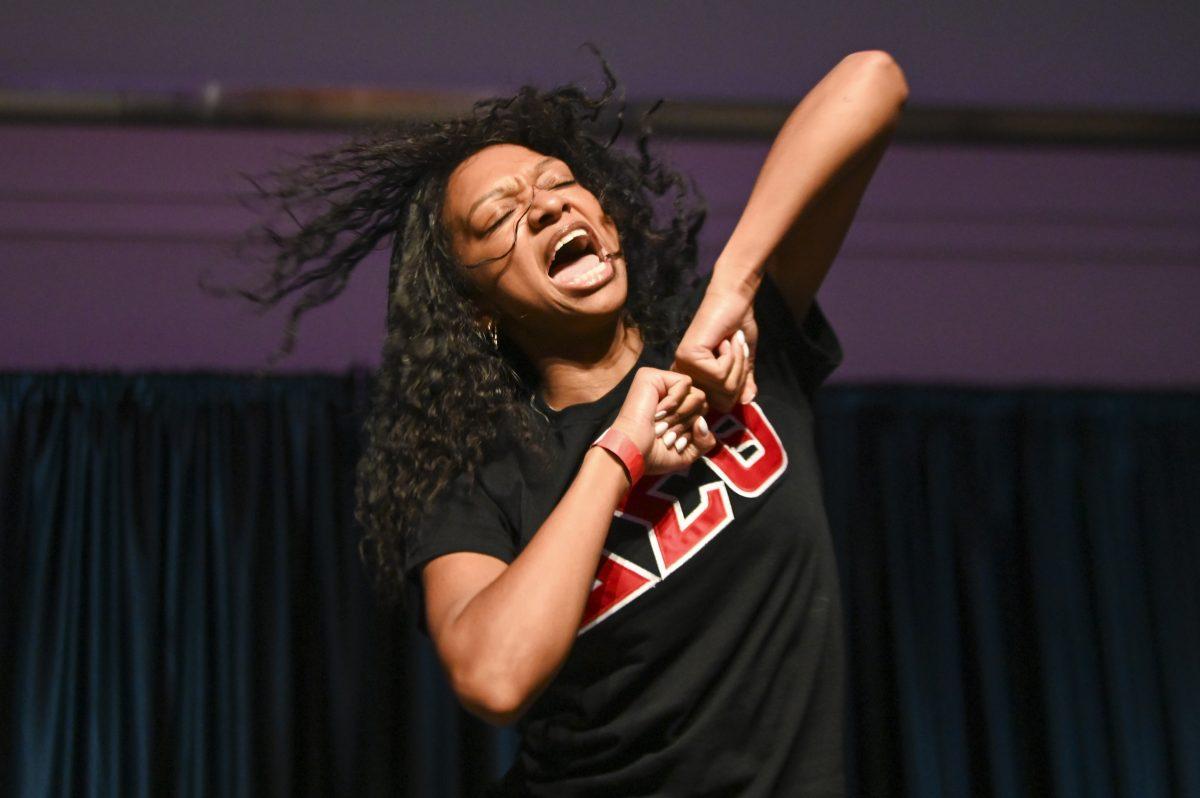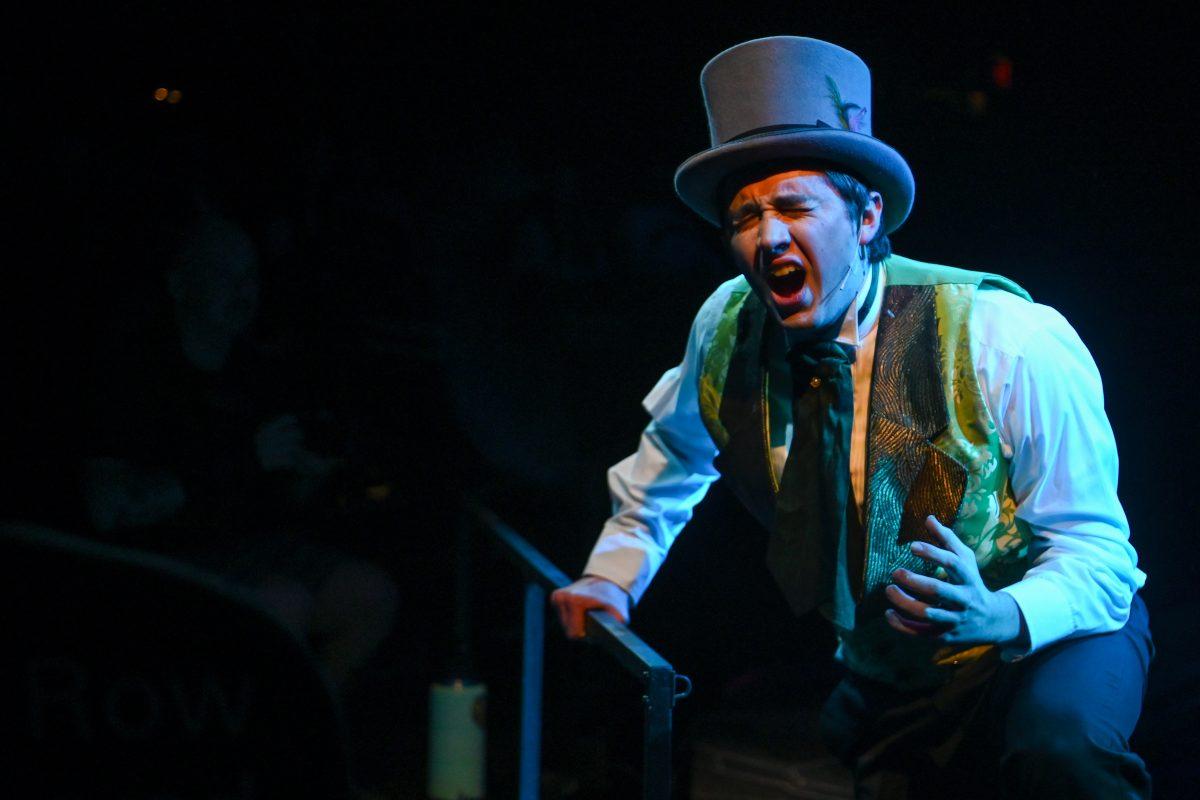Zooming around the field on their brooms, chasers shouted to each other, passing the Quaffle back and forth on their way to the goal and the keeper blocking it. The only thing missing – is the magic.
Preparing for their match next Sunday, the Wolfpack Quidditch Club donned their broomsticks and took to Harris Field Sunday for their weekly practice. The club was started in 2009 by Nick Toptine, a freshman in computer science, and became an official club in September 2009.
“We’re getting a lot more dedicated,” Toptine said, who is the commissioner of the Quidditch Club. The club has 41 official members.
Quidditch is a sport that was created by the author of the Harry Potter novels, J.K. Rowling. In the books, players fly around on broomsticks playing a game similar to soccer, with several major twists. In real life, however, non-magical humans – muggles — can’t fly and balls don’t have minds of their own.
According to the International Quidditch Association, “Quidditch was adapted from the Harry Potter novels in 2005 at Middlebury College in Vermont by Xander Manshel.”
Each team consists of seven players on the field at once: three chasers, two beaters, a keeper and a seeker. Teams are encouraged to have up to 20 members for substitutions and in case of injuries.
“This is an incredibly active sport,” Toptine said.
The primary goal of the chaser is to score points by throwing the main ball of the game, the quaffle, into any of three hoops at the opposing team’s side of the field. The keeper tries to keep the ball from going into the hoops. Each goal earns the team 10 points.
The beaters’ goal is to distract the opposing team by throwing balls at them. In Rowling’s Quidditch, there were two bludgers (balls), both of which had a mind of their own and would fly around trying to knock players off their brooms. Beaters would use bats to try and direct the bludgers to their opponents.
In muggle Quidditch, the beaters use dodgeballs. Three bludgers are on the field at a time. Any player who is struck with a bludger must drop everything but their broom and touch one of their goal hoops before returning to play.
The final player of the team is the seeker. This player’s job is to find the snitch. In Rowling’s Quidditch, the snitch was a golden ball that was a little bigger than a golf ball. It also had wings and flew around the field at a very high speed. In muggle Quidditch, the snitch is a person wearing yellow who runs around and does (almost) literally whatever he can to evade capture by either of the seekers.
Rob Nunely, a sophomore in creative writing, plays the snitch in the club and is also the vice-commissioner of the club. He uses “hapkido” a grappling martial arts, to help him avoid capture.
“The snitch is not a player,” Nunely said, “so he can do whatever he wants. I often throw [people] to avoid being caught.”
The snitch has a completely different set of rules than everyone else on the field. First, he does not have a broom. Second, according to the official rulebook, the snitch does not have any rules regarding fouls. This means they can do whatever they want on (and off) the field.
A vital rule that the snitch must follow is the presence of a “tail.” Each snitch must take a long sock, put a tennis ball inside of it, and put the ball into the back of their pants so that the end of the sock hangs out like a tail. In order for the seekers to catch the snitch, they must pull the sock out of the snitch’s pants. 30 points is awarded to the team who catches the snitch.
Dan Smidler, a sophomore in biomedical engineering, plays keeper for the club. He also acts as a coach for the team, creating plays and going over strategies during each of the meetings. He said he tries to teach them new plays in each position of the field and makes sure they have fun playing the game.
“I am one of the captains,” Smidler said. “We are good; we can afford to have fun.”
Toptine said the club is definitely the best in the Carolinas.
During practice, one of the plays Smidler went over with the team was “the slant.” In this play, the three chasers line up and attack the goal at the same time. This play virtually ensures the quaffle will make it to the goal regardless of whether any of the chasers get hit by bludgers.
After running it a few times, Smidler gave some pointers and had the chasers run the play again. Rickey Smith, a sophomore in biology, played keeper during this practice. He said the “play is hard as hell to defend.”
Smidler hopes this play, among others, will give the team an edge in the tournament this Sunday. The University is hosting the tournament against Duke, UNC-Chapel Hill and UNC-Greensboro on Lee Field at noon.
“We’re trying to join the World Cup next year if we can get enough money,” Toptine said. “We are planning on selling concessions as a fundraiser [at the tournament].”







